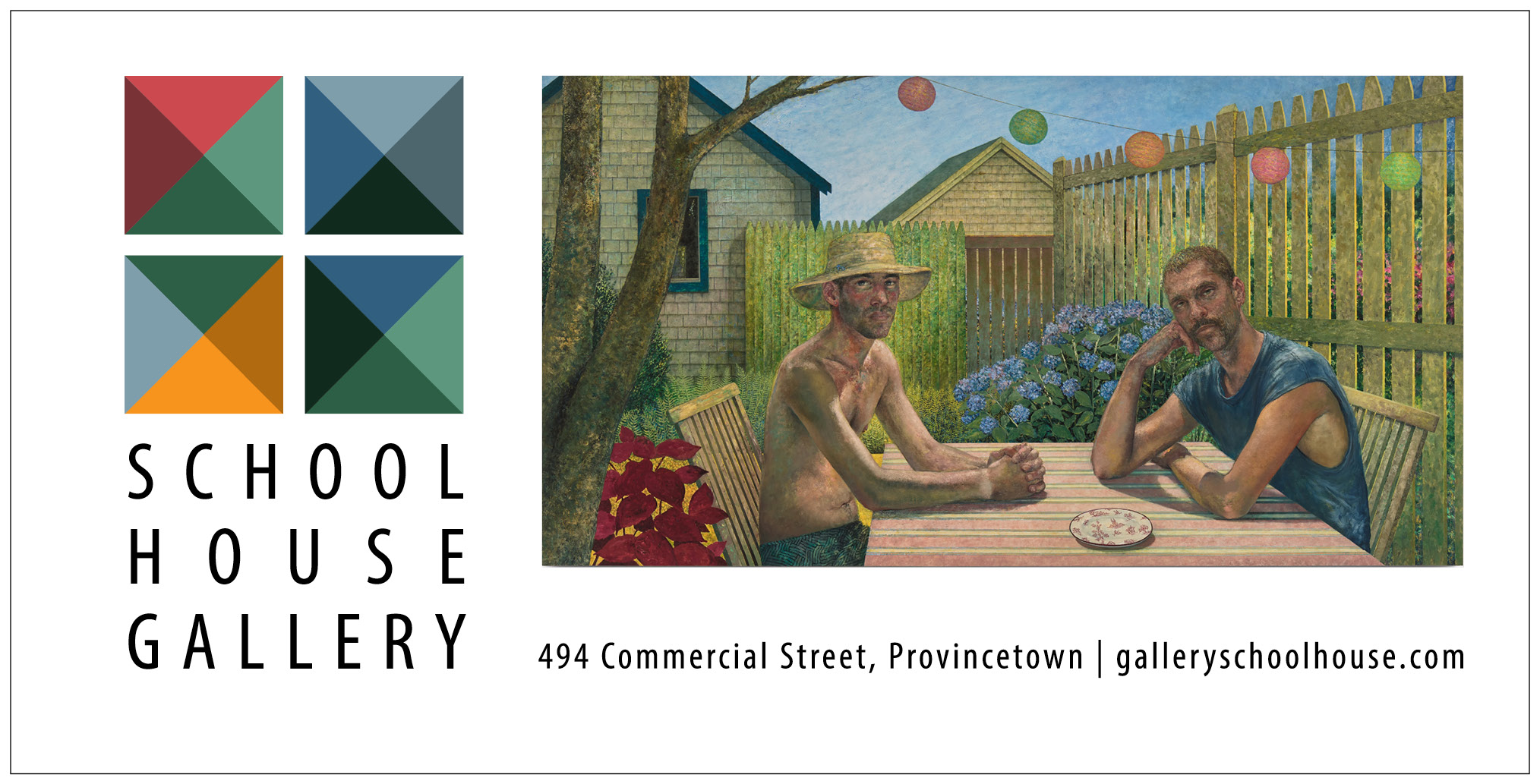PROVINCETOWN — The 250 Bradford St. home of artists Elspeth Halvorsen and Tony Vevers, formerly owned by Mark Rothko, is hidden behind an overgrown patch of trees. On this sunny, hot August day, light splatters through leaves and pine branches creating an enchanted forest of another time, a Provincetown past.
Inside, Halvorsen sits under a portrait of herself as a young nude in the forest, a love poem in brush strokes painted long ago by her husband. She recently celebrated her 90th birthday and is just as beautiful today as in her portrait — age has only rendered her smaller, frailer.
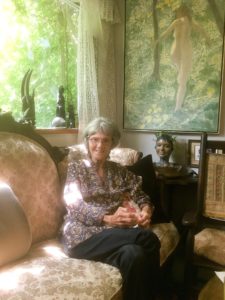
Elspeth and Tony’s second daughter, the artist Tabitha Vevers, stands next to her mother in the living room surrounded by her parents’ artwork. Just as in the boxes Halvorsen constructs out of wood, glass, aluminum, and found objects, time seems to have many layers in this home: within the sunlight and shadows, there is the little girl Tabitha, crouched on the wooden floor painting on a shell while her mother and father work in their upstairs studios. Elspeth was delighted when both her daughters grew up to become professional artists. (Stephanie Vevers’s pursuits include documentaries and the study of the human microbiome as a cultural project.)
Halvorsen’s boxes will be shown along with works by Varujan Boghosian, Carmen Cicero, and Paul Resika from Aug. 29 to Dec. 21 at the Cape Cod Museum of Art in Dennis in an exhibit titled “Interpreting Their World,” with an opening reception at 5:30 p.m. on Friday, Aug. 30.
“Each with strong Cape ties and all in their 90s, these artists have created unique and prominent positions in the art world due to a lifelong commitment to it,” says Benton Jones, director of art at the museum. “Each artist has contributed to the annals of art history with their own approach, style, and perspective and thoughtfully evolved those personal stories throughout their long lives.”
Interpreting her world
Halvorsen’s world has been Provincetown for most of her long life. She and Tony came here for the first time in the fall of 1955 when Elspeth was 26 and Tony 29. The young married couple had just had their first child, Stephanie.
“Having a baby in New York City just felt like the wrong thing to do,” Elspeth says, “like putting a flower on a railroad track.” Tony had met the painter Milton Avery, who encouraged the two young artists — both were mainly painting at the time — to discover Provincetown. “He knew someone who wanted a person to take care of his house for the whole winter,” says Elspeth. “That became us.”
That first house Elspeth and Tony stayed in was at 177 Commercial St., with views of Provincetown harbor. “There we were, right by the water,” she says. “Just incredible. I couldn’t believe it. Stephanie was still an infant and the house had no heat, so we heated a small space with kerosene heaters and closed off the rest with blankets. We looked out onto the water and it was another world altogether. We knew we wanted to stay.”
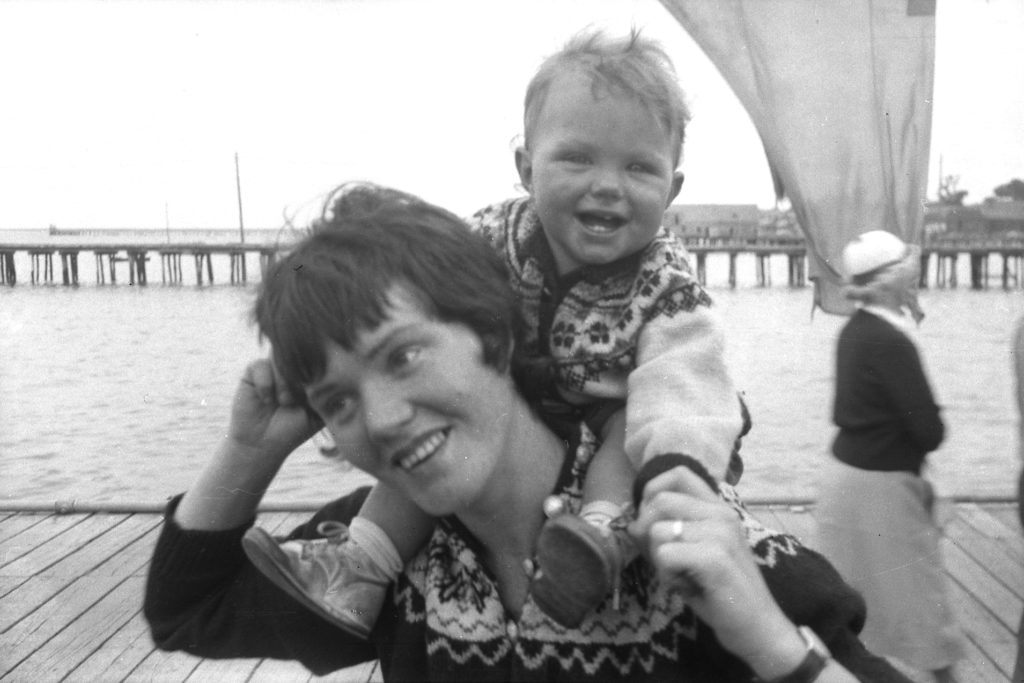
That view of the water and beaches and horizons of Provincetown, the light on the sea by day and moonlight by night, have become in some way part of almost each one of Halvorsen’s boxes. A painter and then a photographer before she started constructing boxes, Elspeth uses silvery tones and hues of blue and sand colors in all of her pieces. The moods of the sea, moon, and tides have become her signature.
The young couple, says their daughter Tabitha, did not have a lot of money, but they had a great life, with many artist friends and the beautiful environment surrounding them. The Portuguese community was warm and generous. “Fishermen unloading on MacMillan Wharf used to give my mother fresh fish,” she says.
Elspeth agrees: “The local Portuguese people welcomed us, and Tony found a job doing carpentry almost immediately. I worked at the Portuguese bakery selling bread for 19 cents a loaf and was able to take my baby. It was wonderful.”
The couple knew that winter that they didn’t want to leave Provincetown. “They found a cheap summer rental on Race Road,” says Tabitha, “and then a year-round place on Law Street, where we all lived when I was a toddler. Kerosene heat in the living room only — my baby bottle used to freeze overnight. And no hot water. Mum heated water on the kitchen stove and bathed us in a galvanized tub, kind of like a Mary Cassatt painting. Very 19th century.”
Eventually Tony heard that Mark Rothko, whom he had met in New York City, was selling his home on Bradford Street. “Rothko wanted to move back to the city and wanted us to look at his house. We just fell in love with it,” Elspeth remembers, and points toward the trees protecting it from the road. “There was nothing there but sand. We could see all the way to the water. But we thought we couldn’t possibly buy a house, we don’t have a penny.”
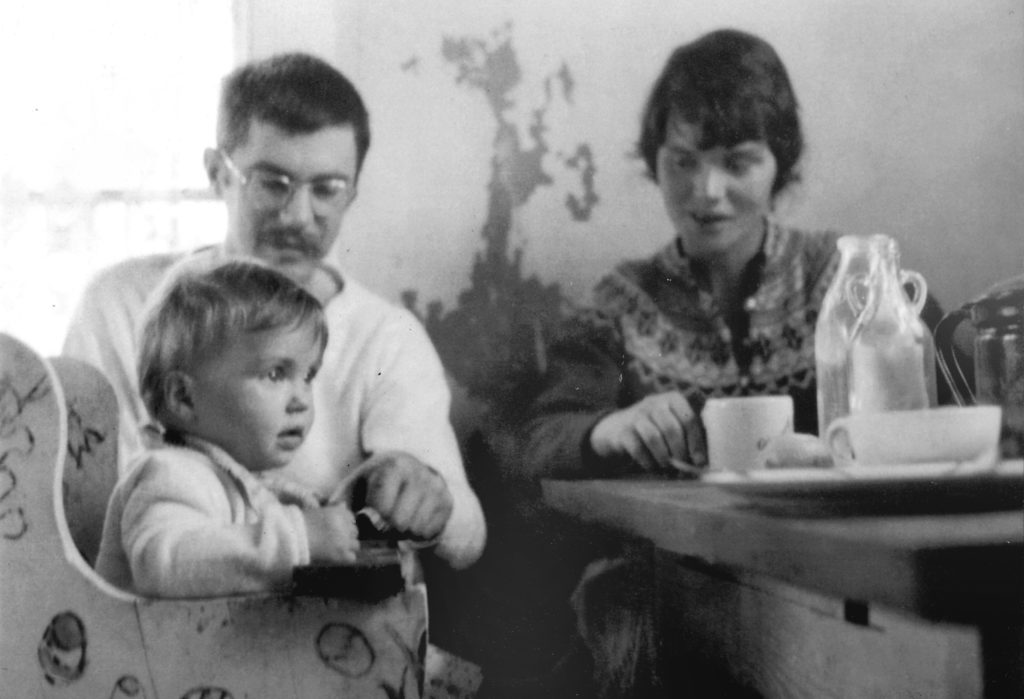
Then Tony sold a large painting and it was enough for a down payment. “It’s become much harder for young artists now,” Elspeth adds, “much, much harder. Provincetown has become such an expensive place.”
When a motel was built across the street, obscuring the view, the couple began to plant the trees that now surround Elspeth’s home. “We made a wood in front of our house for ourselves,” she says. Their re-creation of their own world around their home is reminiscent of what happens in a Halvorsen box: found objects, wallpaper, former paintings find new use and meaning.
In the 1960s Tony began teaching art and art history at Purdue University, and for those years the family of now four — Tony, Elspeth, Stephanie, and Tabitha — spent winters in Indiana and summers in Provincetown.
“At Purdue I met a woman, Marilyn Holberg,” says Elspeth, who was constructing boxes and creating worlds inside them. “And I thought, oh my gosh, that’s a whole new way of working.”
Boxes influenced by life on the beach
Elspeth creates her worlds with found pieces from nature, from antique stores, from her many walks on the beaches of Provincetown. Pieces of her first box, made in Indiana, came back to Provincetown with her and became part of her work titled “To the Monument.”
“The early artists here, like Hawthorne, purposefully left out the monument,” she says. “They thought it was corny. But I love it, the view of the monument with the moon and the skyline behind it, it’s momentous. So this is sort of my salute to the monument. My ode to Virginia Woolf.”
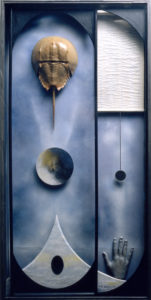
Creatures of the sea inhabit many of the worlds Elspeth has created in her boxes. The hand is a mermaid’s in “The Mermaid and the Horseshoe Crab” (1991). In “The Whole World Is Watching,” a box created in response to 9/11, horseshoe crabs float in the sky, perhaps representing bombs, or angels. “Horseshoe crabs have always been fascinating to me,” she explains. “They have such a fantastic shape. When they are on their back, they are completely helpless. There was a period when they got into everything I did.
“When we were in Provincetown, we lived on the beach,” Elspeth recalls. “We had breakfast and lunch together there. Sometimes we went in the evening, too.” The water was an enormous influence. “Being so close and affected by the changing tides, you know, you see something different every time. It puts you in another world.”
Halvorsen has been called the Emily Dickinson of the visual arts. She evokes poems by W. B. Yeats in the titles of her works. His poems, she feels, with images of the moon and the sea, use similar language to speak of life and death and rebirth. Halvorsen’s boxes in their evocative simplicity and often stark yet stunning imagery — a hand reaching from the frame, a ladder stuck mid-air, an empty swing — are reminiscent of poems, of just how much can be captured in so little.
Halvorsen is the daughter of the Norwegian inventor Arthur Halvorsen and the English painter Colette Finch Pratt. Constructing boxes came naturally to her, just as painting had since her childhood. Elspeth’s father had taught her to use tools at a young age.
“My father wanted boys,” she says, “and they didn’t come along until later, so he taught me. I was always building, using a hammer as a small child.” Arthur Halvorsen’s major invention consisted of a bulb covered inside with aluminum paint to direct light through a hole, a device used in World War II on target planes.
“My mother remembers him mixing aluminum paint in large vats,” says Tabitha. “He then poured the paint in the inside of lightbulbs so only a small hole remained for the light to shine through.”
Elements of his work are echoed in many of Elspeth’s boxes, a connection she discovered only recently. Silver moons, bent aluminum to reflect light and the horizon on the water, and round holes cut in the boxes with glass spheres that allow more light to enter from above are signatures of Halvorsen’s work.
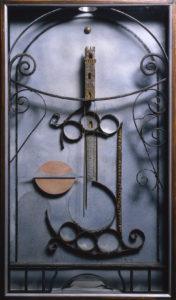
A lifelong love story
Elspeth takes a visitor up a tiny staircase to her studio filled with tools, photos, memories. Her mother’s and grandmother’s palettes hang on the wall, photos of herself as a young woman with Tony, who died in 2008, of Tabitha’s wedding to the artist Daniel Ranalli. Elspeth and Tony worked side by side in their studios in this house until Tony’s death. In many ways it feels like he is still here. Theirs was a lifelong love story.
“We met when my mother took me up to Maine. She was trying to get me away from some guy I was going with,” Elspeth laughs. “We went to a ball and there were three artists with cowboy hats and cowboy boots. One of them walked up and asked me to dance. It was Tony. We fell in love on the spot and were married six weeks later.”
Elspeth and Tony worked side by side for their entire married life together. “We have a sympathetic overlap, but we didn’t imitate each other’s work at all,” Elspeth says. “When we were done with a piece, we would bring it down, hang it on a wall, and look at each other’s work together. And Tony would say, ‘That’s a winner, don’t touch another thing!’ ”
Editor’s note: An exhibition of new work by Tabitha Vevers titled “Seeking Symmetry,” which celebrates her mother’s life and work, will be on display at the Albert Merola Gallery, 424 Commercial St., Provincetown, from Aug. 30 through Sept. 18, with an opening reception from 7 to 9 p.m. on Friday, Aug. 30.
